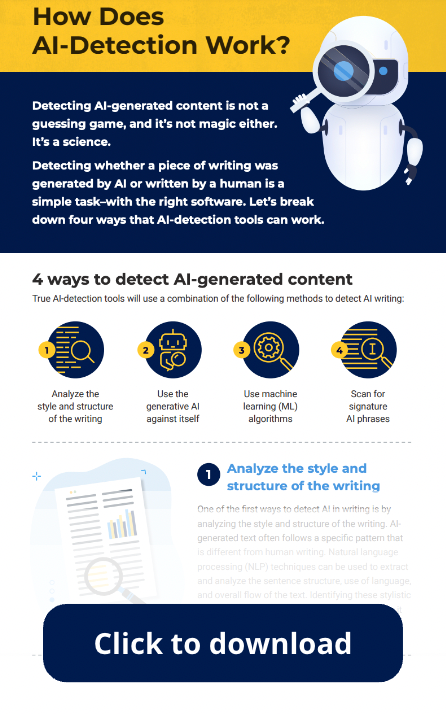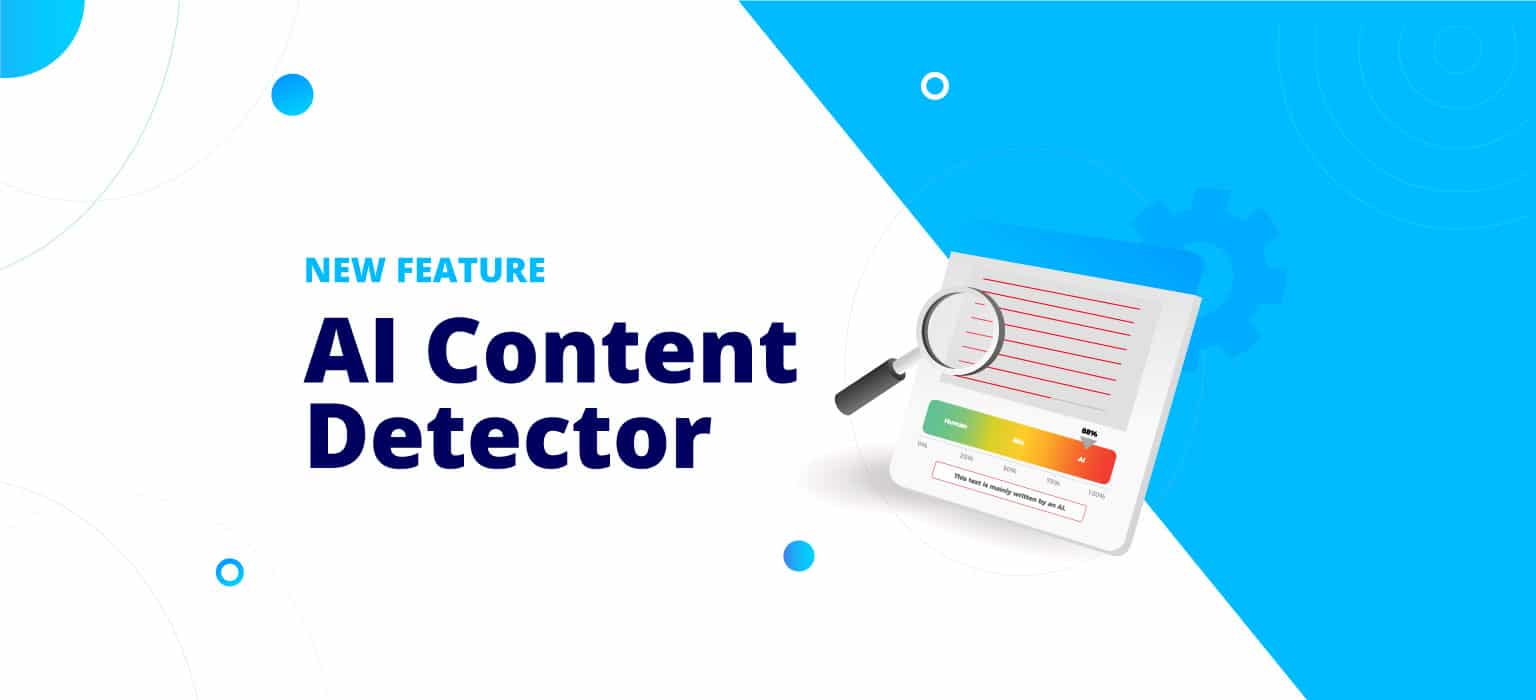How the AI Detector Can Help Prevent AI-Based Content Plagiarism
How the AI Detector Can Help Prevent AI-Based Content Plagiarism
Blog Article
Recognizing the Value of an Ai Detector in Today's Digital Landscape
As synthetic knowledge remains to permeate numerous elements of web content production, identifying between machine-generated and human-generated material has come to be significantly intricate. This evolving landscape offers substantial difficulties connected to credibility and credibility, necessitating the development of AI discovery devices. These instruments not just help in determining AI-produced material yet additionally promote the stability of info circulation. Comprehending their function becomes imperative as we browse a future where the integrity of media is under constant examination. What effects might this have for creators and customers alike?
The Surge of AI Content

The increase of AI-generated web content has substantial implications for numerous sectors, consisting of marketing, amusement, and journalism - ai detector. Organizations are increasingly utilizing these innovations to improve efficiency, customize material, and engage target markets extra successfully. The capacity to analyze substantial datasets enables AI systems to customize material to meet particular user choices, giving a more individualized experience
However, the expansion of AI content also increases vital considerations for material makers and consumers alike. As AI ends up being much more incorporated into content production operations, recognizing the nuances of AI-generated product is important for keeping quality and significance in a rapidly advancing electronic environment. Accepting this technological advancement while staying alert regarding its implications is important for stakeholders in the electronic media landscape.
Challenges of Authenticity
The development of AI-generated web content has presented significant difficulties concerning authenticity in electronic media. As algorithms become much more sophisticated, distinguishing in between human-created and machine-generated content ends up being increasingly hard. This obscuring of lines elevates issues concerning the reliability of information and the possibility for false information to proliferate.
Among the main difficulties is the disintegration of count on among consumers. With AI with the ability of creating reasonable message, pictures, and video clips, people might discover it testing to recognize real sources from deceptive ones. This hesitation can result in a wider mistrust of all electronic content, complicating initiatives to determine reliable info.
In addition, the ramifications for intellectual home are considerable. As AI devices create material based upon existing jobs, inquiries regarding possession and creativity arise. Material makers may have a hard time to protect their work from uncredited AI recreations, undermining their rights and livelihoods.
Lastly, the potential for malicious uses AI-generated web content, such as deepfakes and automatic propaganda, poses serious honest and societal threats. These obstacles emphasize the immediate demand for frameworks that promote authenticity in the digital landscape, making certain that info remains reputable and trustworthy.
Function of AI Detectors
Dealing with the obstacles of credibility in digital media calls for cutting-edge remedies, and AI detectors have become a crucial device in this effort. These technologies are developed to examine and identify material produced by synthetic intelligence, thus facilitating the discernment in between human-created and machine-generated materials. The role of AI detectors expands past simple identification; they also add to keeping the honesty of information taken in by the public.
AI detectors use innovative algorithms to look at various aspects of electronic material, including etymological patterns, structural abnormalities, and specific markers that show automation. Their application spans several fields, consisting of journalism, education, and social networks, where the existence of AI-generated material can bring about false information and erosion of trust fund.

Advantages of Utilizing AI Detectors
Guaranteeing authenticity in electronic content personifies the basic requirement for trust in details resources, and AI detectors work as a powerful ally in this pursuit. By identifying AI-generated web content, these tools assist keep the integrity of info, thereby shielding customers from misinformation and improving general material high quality.
One of the primary advantages of utilizing AI detectors is their ability to enhance material confirmation processes, considerably minimizing the time and initiative needed to analyze the credibility of electronic materials. This efficiency permits material designers, educators, and businesses to concentrate on creating trustworthy and top quality information, rather than investing extreme sources on fact-checking.
Furthermore, AI detectors foster accountability among content designers. The expertise that AI-generated material can be recognized encourages openness and ethical techniques in material manufacturing. This, consequently, adds to an extra educated digital area, as individuals can confidently engage with confirmed info.
Future of Web Content Verification
As the landscape of digital content continues to evolve, the future of material verification tests both provides and opportunities for preserving authenticity. As AI try this web-site technologies breakthrough, so also do the techniques for developing and sharing misinformation (ai detector). This arms race in between material designers and verification tools necessitates the growth of more advanced AI detectors qualified of discerning real material from adjusted or fabricated product

Furthermore, the increase of decentralized modern technologies, such as blockchain, holds pledge for verifying material provenance, making certain that users can map the origins of the details they consume. Eventually, the future of material verification will certainly rest on our capability to innovate in the face of developing risks, promoting an electronic environment where credibility is identified and maintained as an essential concept.
Conclusion
In verdict, the proliferation of AI-generated learn the facts here now material necessitates durable mechanisms for credibility verification. The future of web content confirmation pivots on the efficiency of AI detectors in keeping reliability throughout numerous media platforms.
AI material production tools, such as natural language processing models and generative adversarial networks, enable services and individuals to create high-grade material at extraordinary rates and reduced expenses.
Nonetheless, the proliferation of AI material likewise raises essential factors to consider for web content makers and customers alike. As the class of AI-generated material continues to evolve, the duty of AI detectors ends up being significantly important in safeguarding credibility and promoting transparency in electronic interaction. The understanding that AI-generated content can be recognized motivates transparency link and moral methods in material production.As the landscape of electronic material proceeds to evolve, the future of content verification provides both challenges and chances for preserving authenticity.
Report this page